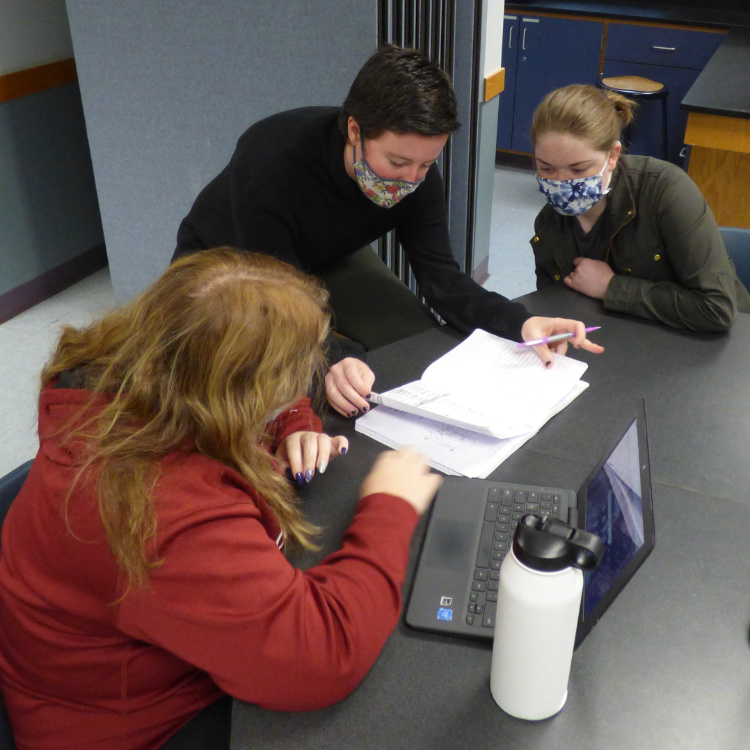Students in Anna Muncy’s Anatomy & Physiology I class study the body’s muscular system by creating personalized notebooks and models.
The notebooks reflect the students’ individual learning styles and creativity. Handcolored diagrams of muscular groups are identified by type — for example, striated or smooth — and carefully annotated.
Using their Chromebooks for additional research on the Internet, students explore the various muscle groups and tendons responsible for coordinated hand movements before creating hand models that illustrate the principles of hand muscle control.
In creating their hand models, students learn that several muscles that originate at the posterior surface of the ulna or the radius have their actions in the hand. Those include the abductor pollicis longus, which abducts and extends the thumb; the extensor pollicis brevis, which extends the metacarpophalangeal joint of the thumb; the extensor pollicis, which extends the distal phalanx, or finger bone, of the thumb; and the extensor indicis, which extends the index finger at the metacarpophalangeal joint.
In addition, there are many small muscles of the hand that have both their origin and their insertion within the hand itself. Those are referred to as the intrinsic hand muscles. They include the palmaris brevis, which assists with grip; the umbricals, which flex the MCP joints and extend the interphalangeal joints of the fingers; the palmar interossei, which adduct the fingers toward the middle finger; and the dorsal interossei, which abduct the fingers away from the middle finger.
The Anatomy & Physiology 1 class is a great example of blended learning which combines traditional, print-based study with Internet research and physical modeling for optimal student learning outcomes.




